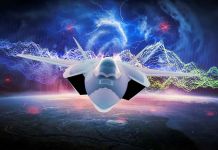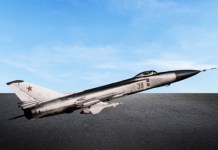A UK-based company is inching closer towards developing a hypersonic jet engine that could power fighter planes to fly at a speed of up to Mach 5 or five times the speed of sound.
The Abingdon-based Reaction Engines specializes in hypersonic propulsion systems. The company is backed by Rolls-Royce, Boeing, and BAE Systems, according to reports.
Reaction Engines recently confirmed that it successfully completed the tests of two subsystems — a full-scale heat exchanger and hydrogen pre-burner — which are vital to the success of the design.
The two key components are required to supply heat energy and air to the core of the air-breathing engine that is being developed to power hypersonic fighter jets.
For decades, Reaction Engines has been working on SABRE or the Synergetic, Air-Breathing Rocket Engine for aerospace applications. The company also runs a test operation center in Denver, Colorado, US.
SABRE makes use of ground-breaking technology that can propel an air vehicle at more than Mach 5 in the atmosphere before transitioning into a rocket mode spaceflight giving a speed of up to orbital velocity, which is equivalent to 25 times the speed of sound.

“SABRE’s ability to breathe air offered a significant reduction in propellant consumption and weight compared to conventional rockets, which have to carry their own oxygen,” according to Reaction Engines.
Hypersonic Technology
Of late, there have been rapid technological advancements in the field of hypersonic missiles or glide vehicles. The extremely fast weapons have the ability to maneuver between varying altitudes and azimuths, making them harder to detect.
The deadly weapons have the speed of a ballistic missile and the maneuverability of a cruise missile.
The United States, the United Kingdom, Russia, China, France, Germany, and Italy are all working towards developing sixth-generation fighter jets under the banners of the NGAD, FCAS, and Tempest programs, among others.
Many of these fighters would have stealth features. There is also speculation that some of them would be hypersonic aircraft.
To cater to future needs, Western defense firms have been investing in hypersonic propulsion. American jet engine maker Pratt & Whitney recently confirmed that it is also developing a hypersonic engine, called Metacomet.
Adam Dissel, president of Reaction Engines’ US operation, said that the advancements in the hypersonics sector have indeed generated a series of dialogues between the US and the UK.
“There is a great collaboration between the U.S. and U.K., and there are lots of discussions happening as to how we collaborate on these technologies,” said Dissel.
The success of the trials of the pre-burned and the heat exchanger, called HX3, marks a significant step towards the development of hypersonic fighter jets.
“The company is very focused on maturing the subsystems that are fundamentally new to aerospace. Pre-cooler was the big one, and now with the innovative HX3 heat exchanger and pre-burner tests, these are three key components very specific to Sabre,
“We are well past the hump in terms of validating the fundamental pieces. Putting it together as an integrated device able to go five times the speed of sound is still a big challenge, so from an overall integration standpoint we are at the beginning,” said Dissel.
Follow EurAsian Times on Google News





